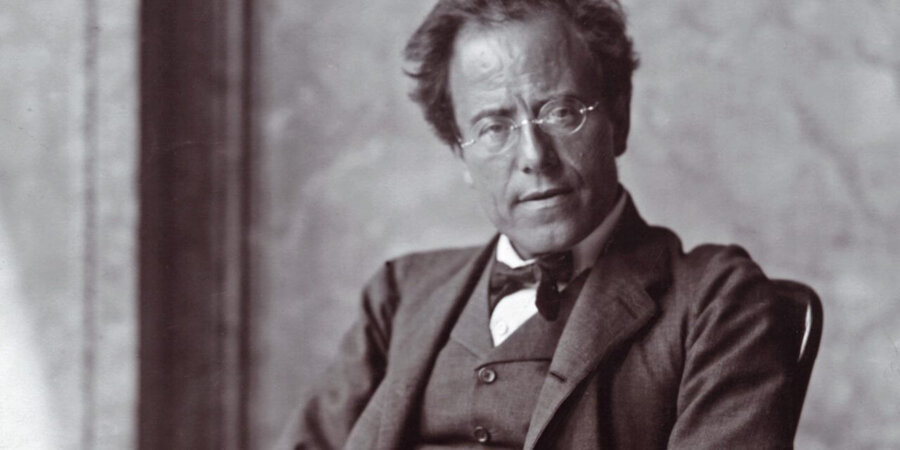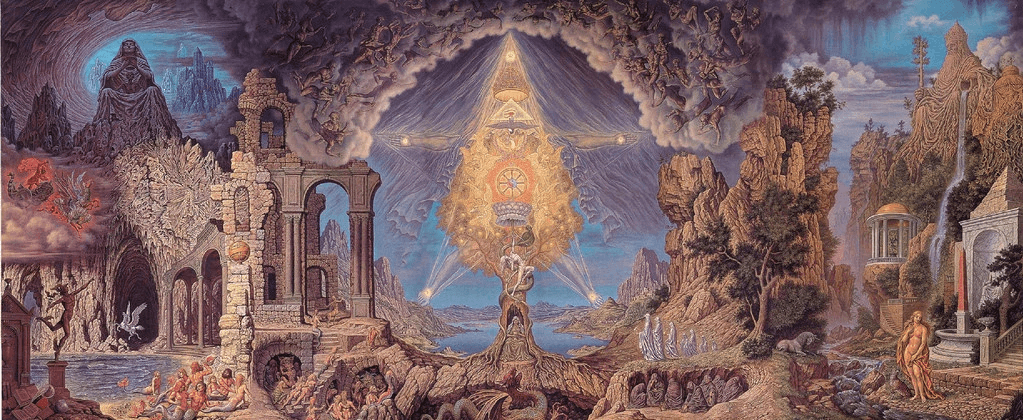Gustav Mahler and the Curse of the Ninth Symphony

Back in the late-nineteenth and early-twentieth centuries, a superstition developed in the classical music world that prophesied the Ninth would be a composer’s last symphony. Arnold Schoenberg summed it up in an eloquent fashion, stating that “he who wants to go beyond it must pass away. It seems as if something might be imparted to us in the Tenth which we ought not yet to know, for which we are not ready. Those who have written a Ninth stood too close to the hereafter.”
To support this, history gives us Beethoven, Schubert, Dvorák, Bruckner, Mahler, and Vaughan Williams, who either died after completing the ninth (Dvorák waited ten years) or never made it through a tenth. We’ll overlook Shostakovich, who not only completed a ninth but went on to write and publish six more. He was Shostakovich, after all. Even death kept a wary, respectful distance.
Mahler, superstitious about the matter, tried to sneak around it by calling his ninth symphonic-length work, “Das Lied von der Erde,” a song-cycle rather than a symphony. He bravely undertook his Ninth, rife with its intimations of death and the ache of the human condition, and published it (although he never heard it performed). A year later he began working on his Tenth, but, true to the curse, he died before finishing it. Although he’d sketched out the whole symphony, only the first movement, “Adagio,” and a brief third movement, “Purgatorio,” are complete.
I’ve got a recording of the twenty-one minute adagio movement. It is exquisite, utterly compelling, imbued with unearthly and paradoxical beauty. Something about this piece of music has grabbed hold of me and won’t let go.
I’ve been listening to this music while working on my novel-in-progress. My thirteen-year-old protagonist, Kylie, a mystic of sorts, already has a connection with classical music; she feels in it a link to her deceased grandmother. She’s been drawn to composers whose music seems to transcend realms. Like Schumann, in the sublime beauty of the third movement of his Symphony No. 2, and in the second movement of his violin concerto (the last major piece of music he wrote before madness claimed him). And Mahler. Ah, Mahler.
Mahler’s 10th seems to hold in it a flirtation with death. Between two pockets of heart-rending beauty and the dissonance of fortissimo brass, a whimsical little waltz tune appears that makes me think, strangely, of The Addams Family. Or perhaps not so strange. This fictitious family, who’d made themselves so comfortable in a world others deemed morbid and unspeakably dark—they were happy. They liked their life, so comfortably adjacent to death.
Kylie has just gotten herself lost in the Santa Cruz Mountains. I see her out there, haunted by grief, aching over friends’ betrayals. The sun pounds down from a pitiless blue sky overhead as she stumbles all afternoon, thirsty and disoriented, over rough mountain terrain, chaparral and scrub punctuating the tiered redwoods and knobby pines. She doesn’t have water, food, appropriate shoes or clothing or a flashlight. Soon it will be dark. The one thing she does have, however, is her iPod.
Mahler’s music—complicated, intellectual and emotionally charged—is a reflection of who the man was, and here’s what he was going through at the time: He’d been diagnosed with a serious heart condition that he knew would eventually do him in. He’d lost his young daughter a few years earlier, and had just recently discovered his beloved wife Alma was having an affair. He was aware of the Curse of the Ninth, and in his exploration of a Tenth, understood that he was likely overplaying his hand.
He did it anyway.
The movement stands alone beautifully, its trajectory complete, with its build-up to a wrenching, inescapable climax, with room afterward for pensive reflection. The last three minutes are hypnotic and I find myself playing them over and over. I see my Kylie, there alone, up high, way too high, no way of getting down safely, and all she can do is crouch in a burnt-out redwood stump through the long, impossibly dark night, and listen to Mahler. Not her favored Saint Saens or Dvorák or even Schumann. She doesn’t want to hear some dreamy portrait of the afterlife. She wants to be where Mahler is. So close to the top, to that Other Place. But not there yet. Grounded, instead, in the pain of the human existence, the ironic, unspeakable beauty of it all.
Republished with gracious permission from The Classical Girl. This essay was first republished in The Imaginative Conservative.




